Thomas Schütte
13 Jul - 06 Oct 2019
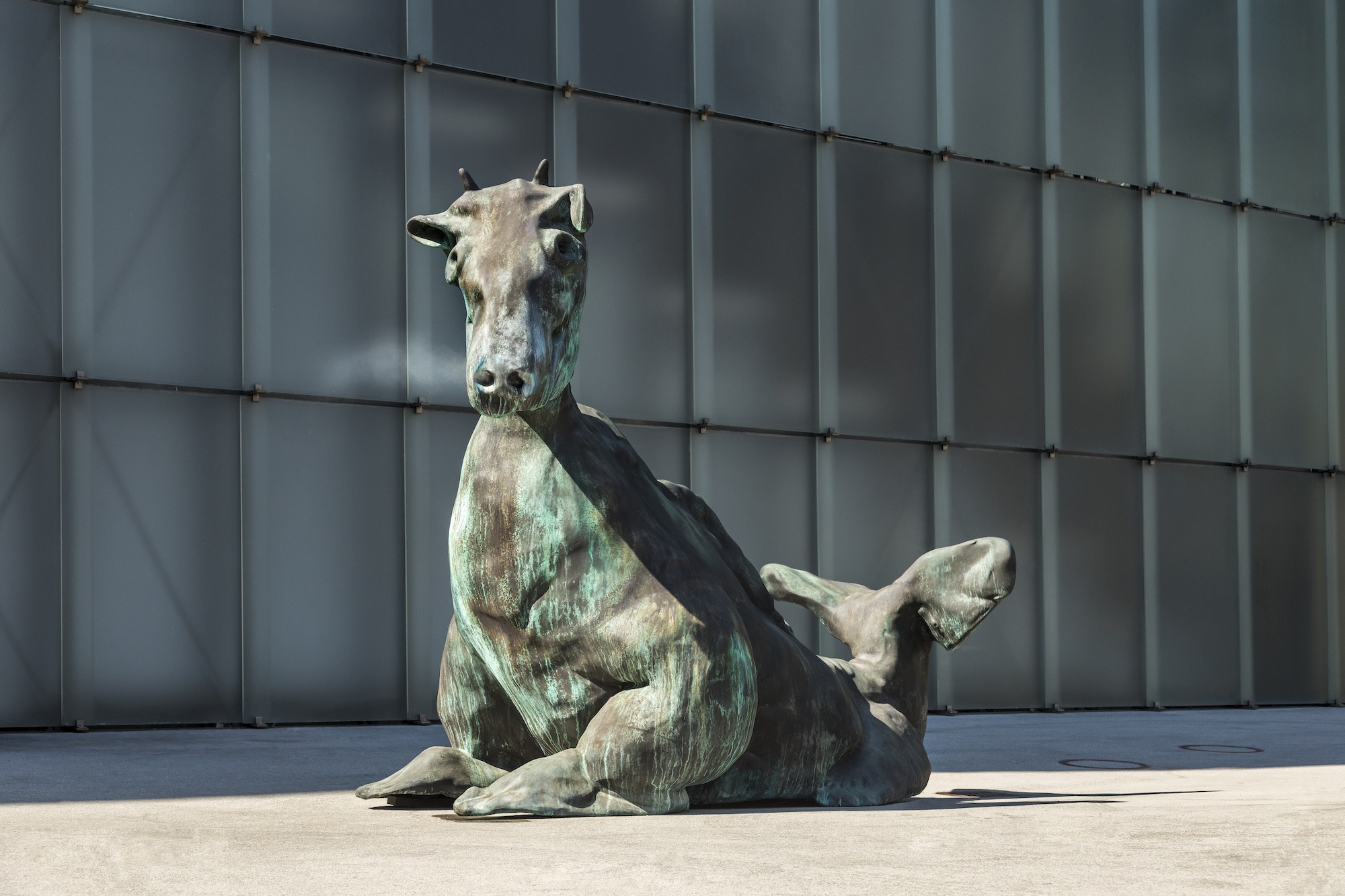
Thomas Schütte
Drittes Tier, 2017
Installation view Karl-Tizian-Platz, Bregenz
Photo: Markus Tretter
Courtesy of the artist
© Thomas Schütte | Bildrecht, Wien, 2019, Kunsthaus Bregenz
Drittes Tier, 2017
Installation view Karl-Tizian-Platz, Bregenz
Photo: Markus Tretter
Courtesy of the artist
© Thomas Schütte | Bildrecht, Wien, 2019, Kunsthaus Bregenz

Thomas Schütte
Drittes Tier, 2017
Installation view Karl-Tizian-Platz, Bregenz
Photo: Markus Tretter
Courtesy of the artist
© Thomas Schütte | Bildrecht, Wien, 2019, Kunsthaus Bregenz
Drittes Tier, 2017
Installation view Karl-Tizian-Platz, Bregenz
Photo: Markus Tretter
Courtesy of the artist
© Thomas Schütte | Bildrecht, Wien, 2019, Kunsthaus Bregenz
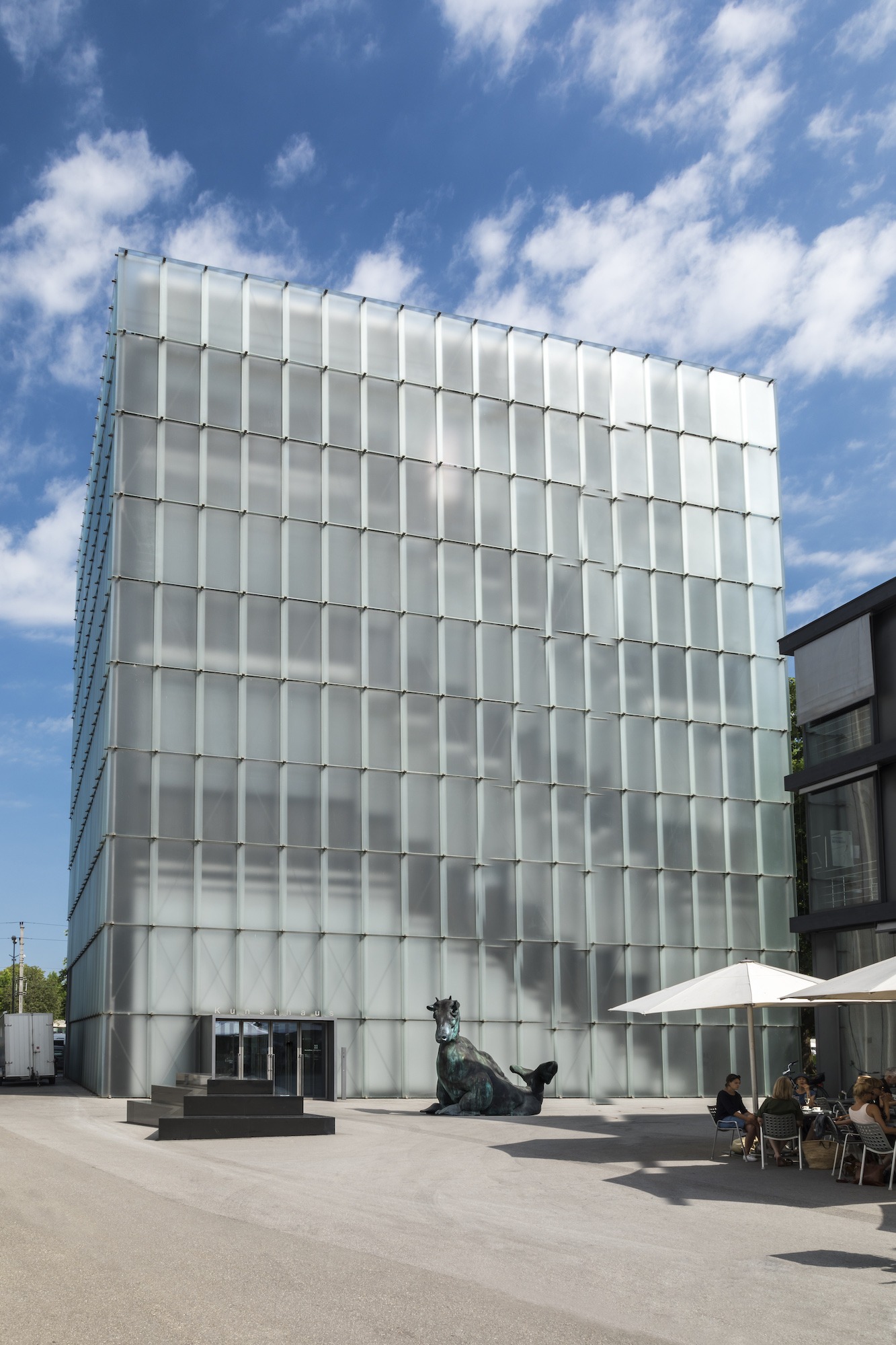
Thomas Schütte
Drittes Tier, 2017
Installation view Karl-Tizian-Platz, Bregenz
Photo: Markus Tretter
Courtesy of the artist
© Thomas Schütte | Bildrecht, Wien, 2019, Kunsthaus Bregenz
Drittes Tier, 2017
Installation view Karl-Tizian-Platz, Bregenz
Photo: Markus Tretter
Courtesy of the artist
© Thomas Schütte | Bildrecht, Wien, 2019, Kunsthaus Bregenz
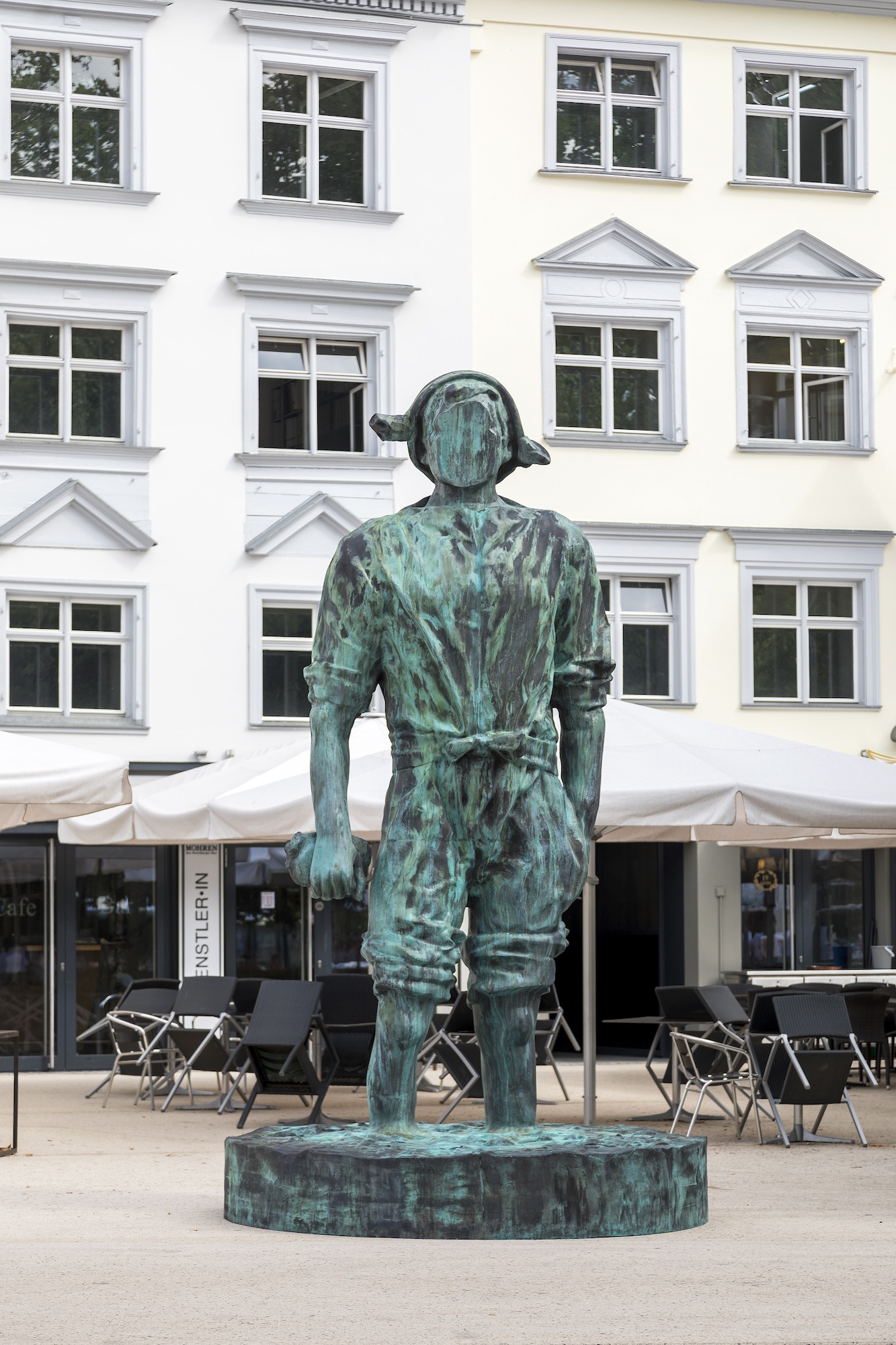
Thomas Schütte
Man Without Face, 2018
Installation view Kornmarktplatz, Bregenz
Photo: Markus Tretter
Courtesy of the artist
© Thomas Schütte | Bildrecht, Wien, 2019, Kunsthaus Bregenz
Man Without Face, 2018
Installation view Kornmarktplatz, Bregenz
Photo: Markus Tretter
Courtesy of the artist
© Thomas Schütte | Bildrecht, Wien, 2019, Kunsthaus Bregenz
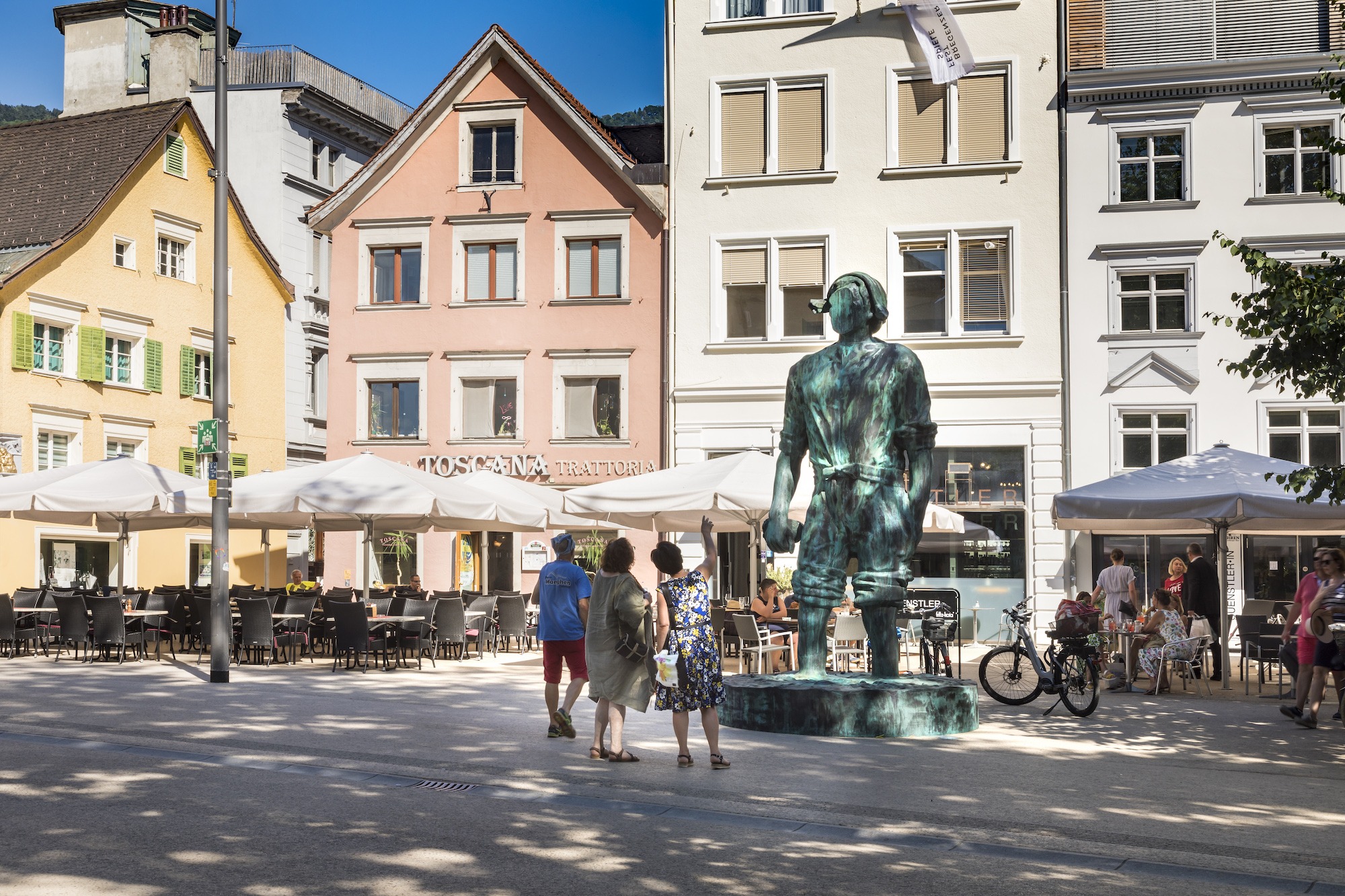
Thomas Schütte
Man Without Face, 2018
Installation view Kornmarktplatz, Bregenz
Photo: Markus Tretter
Courtesy of the artist
© Thomas Schütte | Bildrecht, Wien, 2019, Kunsthaus Bregenz
Man Without Face, 2018
Installation view Kornmarktplatz, Bregenz
Photo: Markus Tretter
Courtesy of the artist
© Thomas Schütte | Bildrecht, Wien, 2019, Kunsthaus Bregenz

Thomas Schütte
Installation view, ground floor, Kunsthaus Bregenz, 2019
Photo: Markus Tretter
Courtesy of the artist
© Thomas Schütte | Bildrecht, Wien, 2019, Kunsthaus Bregenz
Installation view, ground floor, Kunsthaus Bregenz, 2019
Photo: Markus Tretter
Courtesy of the artist
© Thomas Schütte | Bildrecht, Wien, 2019, Kunsthaus Bregenz
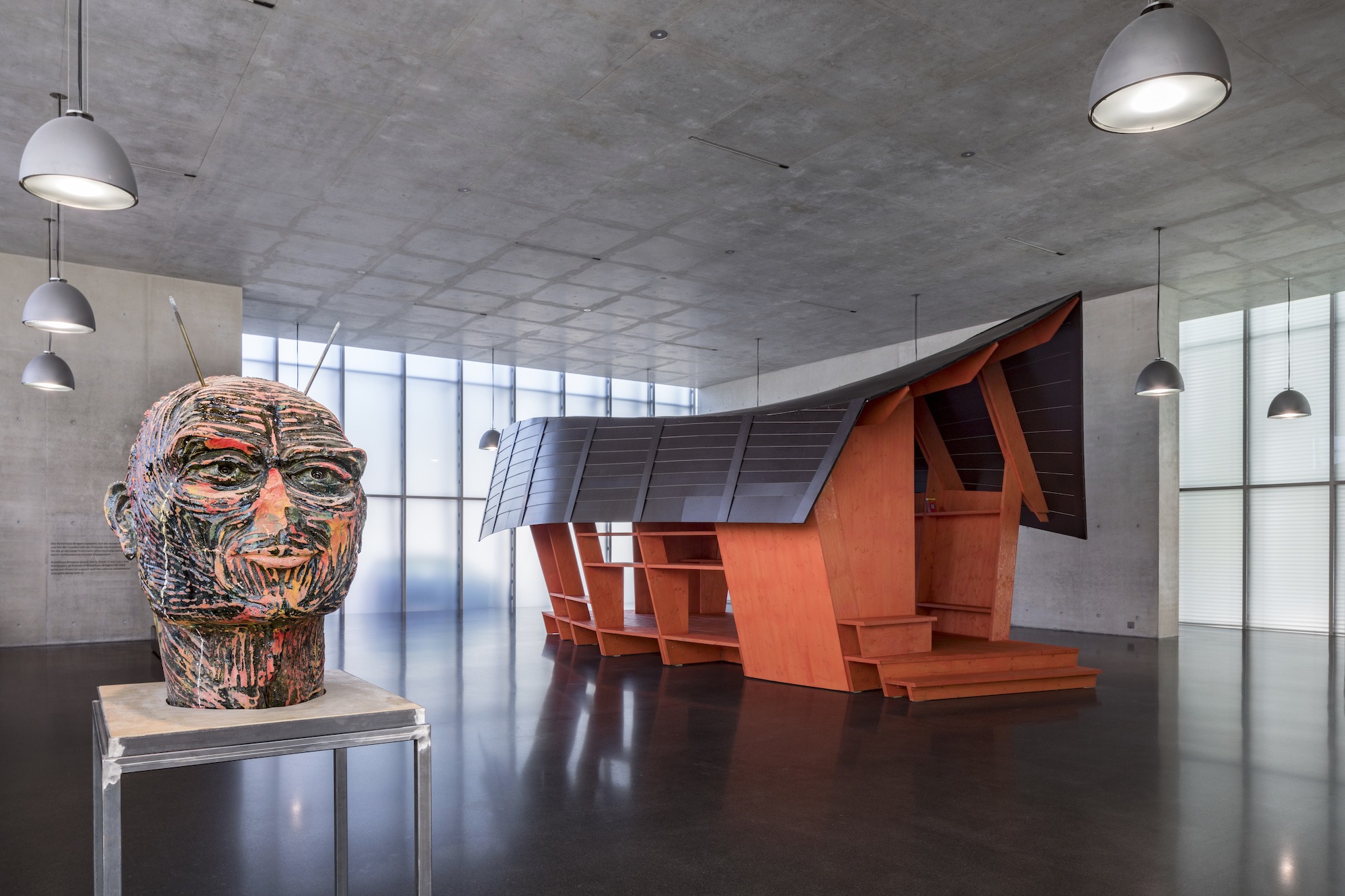
Thomas Schütte
Installation view, ground floor, Kunsthaus Bregenz, 2019
Photo: Markus Tretter
Courtesy of the artist
© Thomas Schütte | Bildrecht, Wien, 2019, Kunsthaus Bregenz
Installation view, ground floor, Kunsthaus Bregenz, 2019
Photo: Markus Tretter
Courtesy of the artist
© Thomas Schütte | Bildrecht, Wien, 2019, Kunsthaus Bregenz

Thomas Schütte
Installation view, ground floor, Kunsthaus Bregenz, 2019
Photo: Markus Tretter
Courtesy of the artist
© Thomas Schütte | Bildrecht, Wien, 2019, Kunsthaus Bregenz
Installation view, ground floor, Kunsthaus Bregenz, 2019
Photo: Markus Tretter
Courtesy of the artist
© Thomas Schütte | Bildrecht, Wien, 2019, Kunsthaus Bregenz

Thomas Schütte
Installation view, ground floor, Kunsthaus Bregenz, 2019
Photo: Markus Tretter
Courtesy of the artist
© Thomas Schütte | Bildrecht, Wien, 2019, Kunsthaus Bregenz
Installation view, ground floor, Kunsthaus Bregenz, 2019
Photo: Markus Tretter
Courtesy of the artist
© Thomas Schütte | Bildrecht, Wien, 2019, Kunsthaus Bregenz

Thomas Schütte
Installation view, ground floor, Kunsthaus Bregenz, 2019
Photo: Markus Tretter
Courtesy of the artist
© Thomas Schütte | Bildrecht, Wien, 2019, Kunsthaus Bregenz
Installation view, ground floor, Kunsthaus Bregenz, 2019
Photo: Markus Tretter
Courtesy of the artist
© Thomas Schütte | Bildrecht, Wien, 2019, Kunsthaus Bregenz
THOMAS SCHÜTTE
13 July – 6 October 2019
“As a contemporary artist you don’t strike poses, it’s rather about being a seismograph recording convulsive events.”
Thomas Schütte
It squats ungainly and cumbersome on the asphalt, Drittes Tier (2017) by sculptor Thomas Schütte is a monster with the head of a horse, the nose of a tapir, and fins and tail of a seal. From his nostrils it snorts water vapor. Schütte was inspired by small clay figures that the artist had made for his children. This grotesque creature, situated on Karl-Tizian-Platz in front of Kunsthaus Bregenz, is one of three colossal sculptures to be erected in public spaces for his summer exhibition at KUB in Bregenz.
The other two sculptures depict men whose feet are rooted in mud. Männer im Matsch (2018) are prisoners of their own plinths. The two figures originate in preliminary versions from the early 1980s. One, serious and upright, holds a flag in his hand, which hangs down disconsolately. The other wears a Phrygian cap on his head, symbol of the French Revolution, but has no face. Rather, he holds it in his right hand, like Perseus the head of Medusa or of a martyr who has suffered a strange execution.
Thomas Schütte refers to them as “seekers.” Thomas Schütte is Germany’s most important sculptor and one of the most significant contemporary artists. He works figuratively as a sculptor and abstractly as a constructor of models. Schütte always uses small hand-made models as a point of departure to progress to a larger scale. Likewise his sculptures are enlargements of hand-sized designs.
The statues are in the tradition of public sculpture. However, he does not depict heroes, warriors, or kings, but rather figures undergoing hardship, waiting, possessing resistant dignity and mystery. The artist describes them as “struggling through.”
Schütte is showing a selection of architectonic models at Kunsthaus Bregenz. The stacked cylinders, barrel vaults, and hermetic cubes evoke architectural designs from the French Revolution or modernist pavilions. Two models titled Bunker, early ones from the 1980s, feature low openings leading to dark corridors. Another model is embedded in its own floor plan (Basement III, 1993), stairs leading down to deeper floors. One of the most recent models is a preparatory one for Schütte’s own architectural construction, his Skulpturenhalle in Neuss, which opened in 2016. For three years, he has been exhibiting temporary displays of key contemporary sculpture in the impressive central space.
The first floor assembles a series of sculptures of women. Figures from bronze, aluminum, and polished steel lie on tables, crouch, kneel, or bend over the edge of their pedestals, displaying the influence of Aristide Maillol and Henry Moore, along with the great sculptors of the late 19th century. Unlike his male figures, who are distorted and tied up, and sometimes malevolent-looking, the surfaces of the “Große Liegenden” (large reclining figures) remain unscathed. However, they too are bent over as if in mourning or appear mutilated. These sculptures of women are complemented by a group of ceramic works, beginning with flags in black, red, and gold. The burden of German history becomes conspicuous, a weight that can be found in many of Thomas Schütte’s works. In Bregenz he is showing a new series of fictional flags situated between the symbolic and playful, metaphor and ornament, nation and confection.
The upper floor displays three Männer im Wind (2018), their bare legs likewise sinking into the ground, and once again an experimental jump in scale is evident. Set up in the empty space of Kunsthaus Bregenz lit by daylight, the statues seem to have been abandoned there like strangely questioning companions.
Biography
Thomas Schütte who has participated in documenta several times was born in 1954 in Oldenburg, Germany.
He studied at the Kunstakademie Düsseldorf where he was a student under Gerhard Richter and Fritz Schwegler. During the 1980s he was a guest professor at the Hochschule für bildende Künste in Hamburg.
His solo exhibitions have included ones at Stedelijk Museum, Amsterdam (2004), Haus der Kunst in Munich (2009), Museo Reina Sofía in Madrid (2010), Serpentine Gallery, London (2012), and Fondation Beyeler in Basel (2013). Schütte participated in the Venice Biennale in 2005, as well as at documenta 8 in 1987, documenta IX in 1992, and documenta X in 1997 in Kassel. Prior to his exhibition in Bregenz, his work will be on display at Monnaie de Paris, Paris (2019). In 2021 the Museum of Modern Art in New York is honoring him with a retrospective.
Thomas Schütte lives and works in Düsseldorf.
13 July – 6 October 2019
“As a contemporary artist you don’t strike poses, it’s rather about being a seismograph recording convulsive events.”
Thomas Schütte
It squats ungainly and cumbersome on the asphalt, Drittes Tier (2017) by sculptor Thomas Schütte is a monster with the head of a horse, the nose of a tapir, and fins and tail of a seal. From his nostrils it snorts water vapor. Schütte was inspired by small clay figures that the artist had made for his children. This grotesque creature, situated on Karl-Tizian-Platz in front of Kunsthaus Bregenz, is one of three colossal sculptures to be erected in public spaces for his summer exhibition at KUB in Bregenz.
The other two sculptures depict men whose feet are rooted in mud. Männer im Matsch (2018) are prisoners of their own plinths. The two figures originate in preliminary versions from the early 1980s. One, serious and upright, holds a flag in his hand, which hangs down disconsolately. The other wears a Phrygian cap on his head, symbol of the French Revolution, but has no face. Rather, he holds it in his right hand, like Perseus the head of Medusa or of a martyr who has suffered a strange execution.
Thomas Schütte refers to them as “seekers.” Thomas Schütte is Germany’s most important sculptor and one of the most significant contemporary artists. He works figuratively as a sculptor and abstractly as a constructor of models. Schütte always uses small hand-made models as a point of departure to progress to a larger scale. Likewise his sculptures are enlargements of hand-sized designs.
The statues are in the tradition of public sculpture. However, he does not depict heroes, warriors, or kings, but rather figures undergoing hardship, waiting, possessing resistant dignity and mystery. The artist describes them as “struggling through.”
Schütte is showing a selection of architectonic models at Kunsthaus Bregenz. The stacked cylinders, barrel vaults, and hermetic cubes evoke architectural designs from the French Revolution or modernist pavilions. Two models titled Bunker, early ones from the 1980s, feature low openings leading to dark corridors. Another model is embedded in its own floor plan (Basement III, 1993), stairs leading down to deeper floors. One of the most recent models is a preparatory one for Schütte’s own architectural construction, his Skulpturenhalle in Neuss, which opened in 2016. For three years, he has been exhibiting temporary displays of key contemporary sculpture in the impressive central space.
The first floor assembles a series of sculptures of women. Figures from bronze, aluminum, and polished steel lie on tables, crouch, kneel, or bend over the edge of their pedestals, displaying the influence of Aristide Maillol and Henry Moore, along with the great sculptors of the late 19th century. Unlike his male figures, who are distorted and tied up, and sometimes malevolent-looking, the surfaces of the “Große Liegenden” (large reclining figures) remain unscathed. However, they too are bent over as if in mourning or appear mutilated. These sculptures of women are complemented by a group of ceramic works, beginning with flags in black, red, and gold. The burden of German history becomes conspicuous, a weight that can be found in many of Thomas Schütte’s works. In Bregenz he is showing a new series of fictional flags situated between the symbolic and playful, metaphor and ornament, nation and confection.
The upper floor displays three Männer im Wind (2018), their bare legs likewise sinking into the ground, and once again an experimental jump in scale is evident. Set up in the empty space of Kunsthaus Bregenz lit by daylight, the statues seem to have been abandoned there like strangely questioning companions.
Biography
Thomas Schütte who has participated in documenta several times was born in 1954 in Oldenburg, Germany.
He studied at the Kunstakademie Düsseldorf where he was a student under Gerhard Richter and Fritz Schwegler. During the 1980s he was a guest professor at the Hochschule für bildende Künste in Hamburg.
His solo exhibitions have included ones at Stedelijk Museum, Amsterdam (2004), Haus der Kunst in Munich (2009), Museo Reina Sofía in Madrid (2010), Serpentine Gallery, London (2012), and Fondation Beyeler in Basel (2013). Schütte participated in the Venice Biennale in 2005, as well as at documenta 8 in 1987, documenta IX in 1992, and documenta X in 1997 in Kassel. Prior to his exhibition in Bregenz, his work will be on display at Monnaie de Paris, Paris (2019). In 2021 the Museum of Modern Art in New York is honoring him with a retrospective.
Thomas Schütte lives and works in Düsseldorf.
